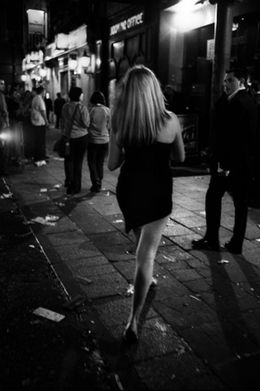
Cardiff by night
Jodi Bieber
Photography - 70 x 50 x 0.1 cm Photography - 27.6 x 19.7 x 0 inch
$2,634
In the 1830s, Nièpce discovered how to print images onto metal plates. When he died in 1833, Louis Daguerre, followed by Francois Arago, continued to develop his research, resulting in the invention of the daguerreotype which consisted of an image printed onto a silver plate when exposed to the light. Together they had invented photography.
The first ever photographs began to appear. Initially used for research purposes, photography started to spread as daguerreotype studios opened everywhere. Portrait photography immortalized the faces of the upper middle classes and were later used to capture all members of society. Celebrities were also a popular subject choice and many photographers specialized in taking their portraits, as Jean-Loup Sieff did all throughout his career almost a century after the invention of photography.
In the beginning, taking a portrait or even the simplest of family photos required a great deal of preparation and time in the studio. However, key technological developments brought about the invention of more compact cameras including the Leica and later the digital single-lens reflex, which meant shorter exposure times and made it easier to produce a greater number of photographs.
These advances also helped contribute to the development of the genre of everyday life photography, which became more popular at the end of the Second World War and focused at first on photographing wealthy or urban families. Families, couples, communities... artists were interested in everyday moments (marriage, lovers kissing, children's games). The simplest of moments in life were seen as the most important and were immortalized in film as testaments to the beauty of human life.
Some of the great photographers made a name for themselves in the genre. Henri Cartier-Bresson, Robert Doisneau, David Goldblatt, Martin Parr and Vivian Maier are only a few of the artists associated with everyday life photography.
Vivian Maier is an American photographer who was born in 1926 in New York. A professional nanny in Chicago, she spent her spare time photographing the world around her and produced around 150,000 photos. Having remained anonymous throughout her artistic life, her genius and photographic accomplishments were finally recognized publicly in 2007.
Cofounder of the Magnum Photographic Cooperative in 1947 alongside David Seymour and Robert Capa, Henri Cartier-Bresson was a pioneer of photojournalism but also an excellent photographer in a more artistic sense. He revolutionized photography by working with incredibly lightweight equipment. He didn't use a tripod or a darkroom and treasured a sense of immediacy when taking photographs. He believed that “above all else, the camera is a sketchbook". Henri Cartier-Bresson's photographic technique is unique and unmistakably recognizable. He never photographed with flash and only worked with natural light, something which was highly characteristic of everyday life photography. Often in the same black and white image, the subjects coexist together but are not centred. His framing, focus and depth of field all help us to see the simple beauty of everyday life that he so exquisitely enhances.
Artsper has a range of everyday life photographs for you to discover, including works from Cartier-Bresson as well as many other artists, whose photos reveal the precious moments of the everyday lives of people from around the world.
Save your search and find it in your favorites
Save your search to find it quickly
Saved search
Your search is accessible from the favorites tab > My favorite searches
Unsaved search
A problem occurred

Photography - 70 x 50 x 0.1 cm Photography - 27.6 x 19.7 x 0 inch
$2,634

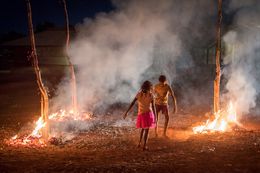
Photography - 42 x 59 x 0.2 cm Photography - 16.5 x 23.2 x 0.1 inch
$2,135

Photography - 61 x 45.7 x 5.1 cm Photography - 24 x 18 x 2 inch
$1,350
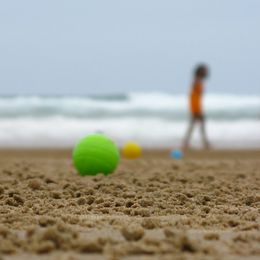

Photography - 40 x 103 x 0.1 cm Photography - 15.7 x 40.6 x 0 inch
$2,373
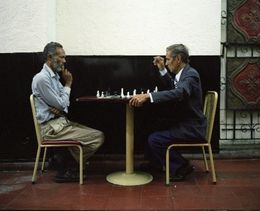

Photography - 27 x 20 x 0.1 cm Photography - 10.6 x 7.9 x 0 inch
$297

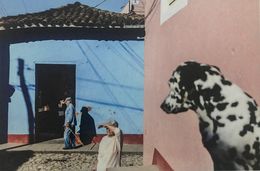
Photography - 40 x 60 x 1 cm Photography - 15.7 x 23.6 x 0.4 inch
$1,186
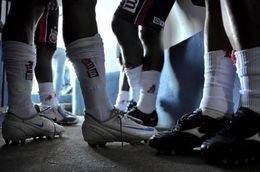
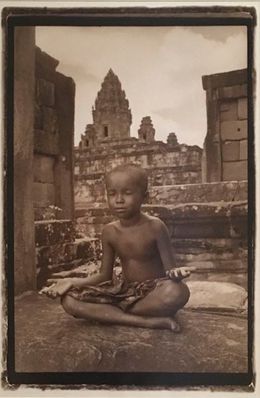
Photography - 105.4 x 86.4 x 2.5 cm Photography - 41.5 x 34 x 1 inch
$2,500
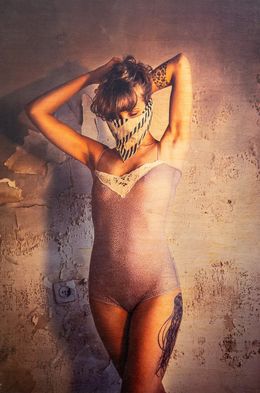

Photography - 75 x 100 x 1 cm Photography - 29.5 x 39.4 x 0.4 inch
$2,373


Photography - 90 x 110 x 3 cm Photography - 35.4 x 43.3 x 1.2 inch
$1,424

Photography - 42 x 49 cm Photography - 16.5 x 19.3 inch
$2,135

Photography - 60 x 90 x 1 cm Photography - 23.6 x 35.4 x 0.4 inch
$925

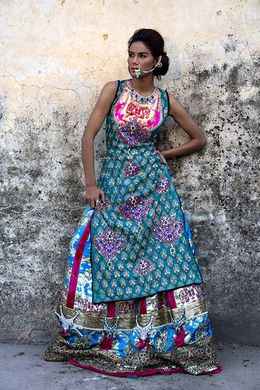
Photography - 120 x 80 x 0.1 cm Photography - 47.2 x 31.5 x 0 inch
$2,966

Photography - 20 x 30 x 0.1 cm Photography - 7.9 x 11.8 x 0 inch
$949

Photography - 40 x 73 x 0.3 cm Photography - 15.7 x 28.7 x 0.1 inch
$1,424
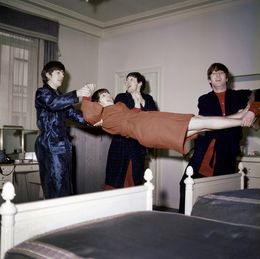
Photography - 53 x 80 x 0.1 cm Photography - 20.9 x 31.5 x 0 inch
$2,373
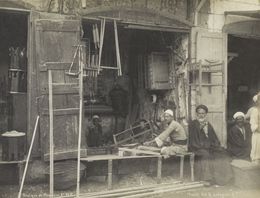
Photography - 76.2 x 101.6 cm Photography - 30 x 40 inch
$1,174

Photography - 31 x 41 x 0.01 cm Photography - 12.2 x 16.1 x 0 inch
$1,305



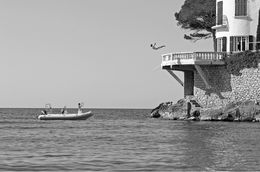
Photography - 60 x 90 x 1 cm Photography - 23.6 x 35.4 x 0.4 inch
$712
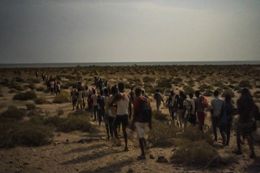
Photography - 40 x 60 x 0.1 cm Photography - 15.7 x 23.6 x 0 inch
$1,780
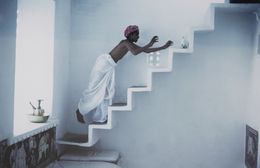
Photography - 40 x 60 x 1 cm Photography - 15.7 x 23.6 x 0.4 inch
$1,424

Photography - 80 x 100 x 2 cm Photography - 31.5 x 39.4 x 0.8 inch
$3,400

Photography - 40 x 60 x 2 cm Photography - 15.7 x 23.6 x 0.8 inch
$652

Photography - 61 x 76 cm Photography - 24 x 29.9 inch
$3,500



Photography - 44.5 x 67 cm Photography - 17.5 x 26.4 inch
$1,127
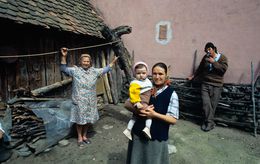
Photography - 30 x 45 x 0.1 cm Photography - 11.8 x 17.7 x 0 inch
$1,201


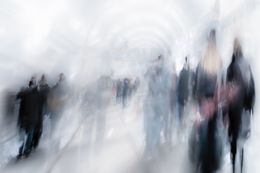
Photography - 100 x 150 x 1 cm Photography - 39.4 x 59.1 x 0.4 inch
$9,271
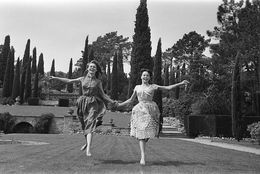
Photography - 50 x 75 x 0.1 cm Photography - 19.7 x 29.5 x 0 inch
$2,135

Photography - 55 x 55 x 0.1 cm Photography - 21.7 x 21.7 x 0 inch
$1,898


Photography - 40 x 50 x 1 cm Photography - 15.7 x 19.7 x 0.4 inch
$3,535



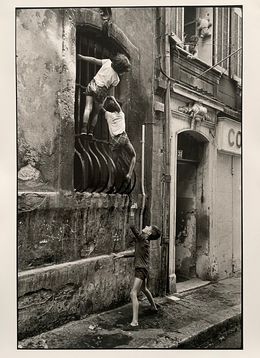
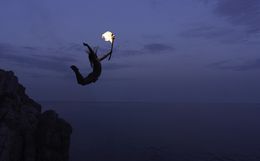
Photography - 79 x 120 x 3 cm Photography - 31.1 x 47.2 x 1.2 inch
$9,491



Photography - 18.63 x 28 cm Photography - 7.3 x 11 inch
$237
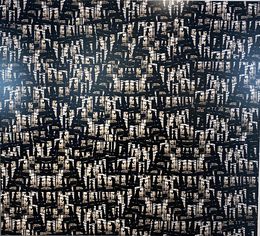

Photography - 30 x 45 cm Photography - 11.8 x 17.7 inch
$534
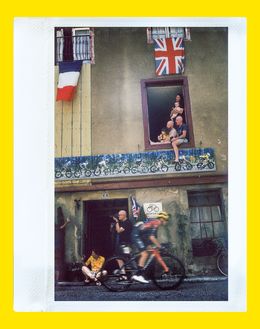
Photography - 50 x 40 cm Photography - 19.7 x 15.7 inch
$475
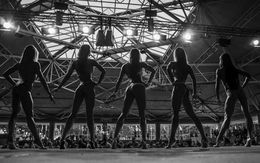
Photography - 60 x 90 x 3 cm Photography - 23.6 x 35.4 x 1.2 inch
$2,491

Photography - 40 x 50 cm Photography - 15.7 x 19.7 inch
$2,669
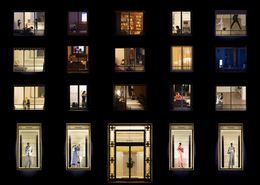
Photography - 71 x 90 x 0.3 cm Photography - 28 x 35.4 x 0.1 inch
$5,339
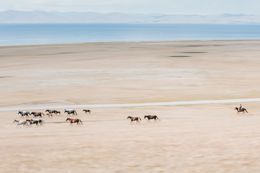
Photography - 60 x 90 x 0.3 cm Photography - 23.6 x 35.4 x 0.1 inch
$1,957

Photography - 60 x 90 x 0.3 cm Photography - 23.6 x 35.4 x 0.1 inch
$1,068

Photography - 50 x 70 x 1 cm Photography - 19.7 x 27.6 x 0.4 inch
$949
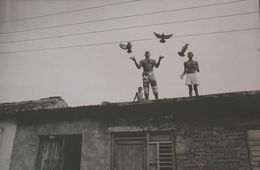
Photography - 24.5 x 34 cm Photography - 9.6 x 13.4 inch
$119
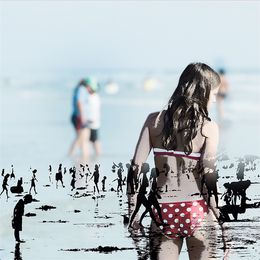
Photography - 102 x 102 x 3 cm Photography - 40.2 x 40.2 x 1.2 inch
$5,087
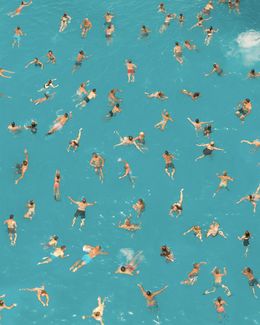
Photography - 74.7 x 59.9 cm Photography - 29.4 x 23.6 inch
$3,950
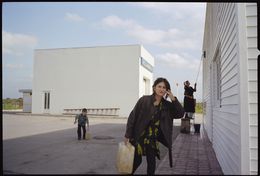
Photography - 50 x 75 cm Photography - 19.7 x 29.5 inch
$1,780

Photography - 76 x 53.7 x 5 cm Photography - 29.9 x 21.1 x 2 inch
$5,694
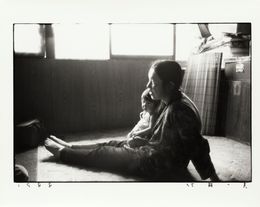

Photography - 30 x 41 x 0.2 cm Photography - 11.8 x 16.1 x 0.1 inch
$415
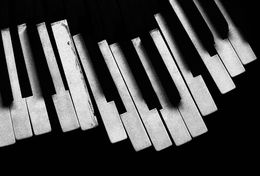


Photography - 30 x 45 cm Photography - 11.8 x 17.7 inch
$1,447
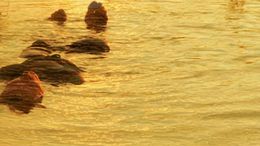


Photography - 40 x 60 x 2 cm Photography - 15.7 x 23.6 x 0.8 inch
$9,313
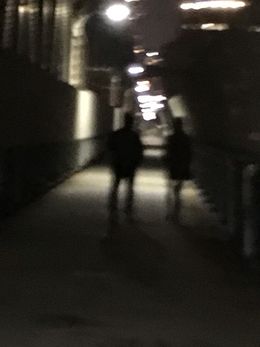

Photography - 114.3 x 83.8 x 0.3 cm Photography - 45 x 33 x 0.1 inch
$8,000

Photography - 17 x 26 x 0.1 cm Photography - 6.7 x 10.2 x 0 inch
$95
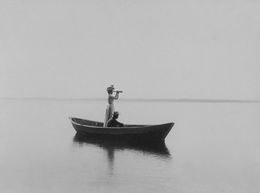
Photography - 30.5 x 40 cm Photography - 12 x 15.7 inch
$4,152

Photography - 60 x 80 cm Photography - 23.6 x 31.5 inch
$3,915

Photography - 52 x 35 cm Photography - 20.5 x 13.8 inch
$534
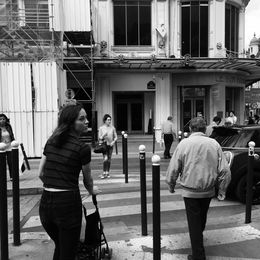
Photography - 22.5 x 22.5 cm Photography - 8.9 x 8.9 inch
$356

Photography - 100.1 x 150.1 x 1 cm Photography - 39.4 x 59.1 x 0.4 inch
$2,729

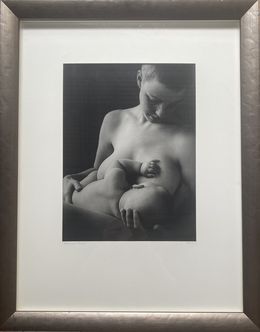

Photography - 18 x 15 x 2 cm Photography - 7.1 x 5.9 x 0.8 inch
$890



Photography - 60 x 80 x 0.5 cm Photography - 23.6 x 31.5 x 0.2 inch
$1,174
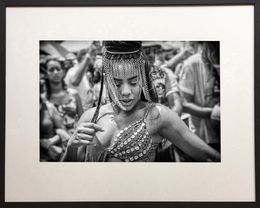

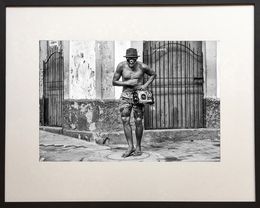
Photography - 40 x 50 x 0.1 cm Photography - 15.7 x 19.7 x 0 inch
$841

Photography - 120 x 84 x 0.1 cm Photography - 47.2 x 33.1 x 0 inch
$3,108
Everyday life photography is a type of photography that captures moments from normal, daily life, such as urban street scenes, everyday objects, or children playing.
Examples of everyday life photography include photojournalistic pictures of a town or city, or snapshots of found or everyday objects.
Mundane photography has the same meaning as everyday life photography, meaning photography that captures images of day-to-day, mundane or banal life.
Choose your preferences
The art is yours
The art is yours